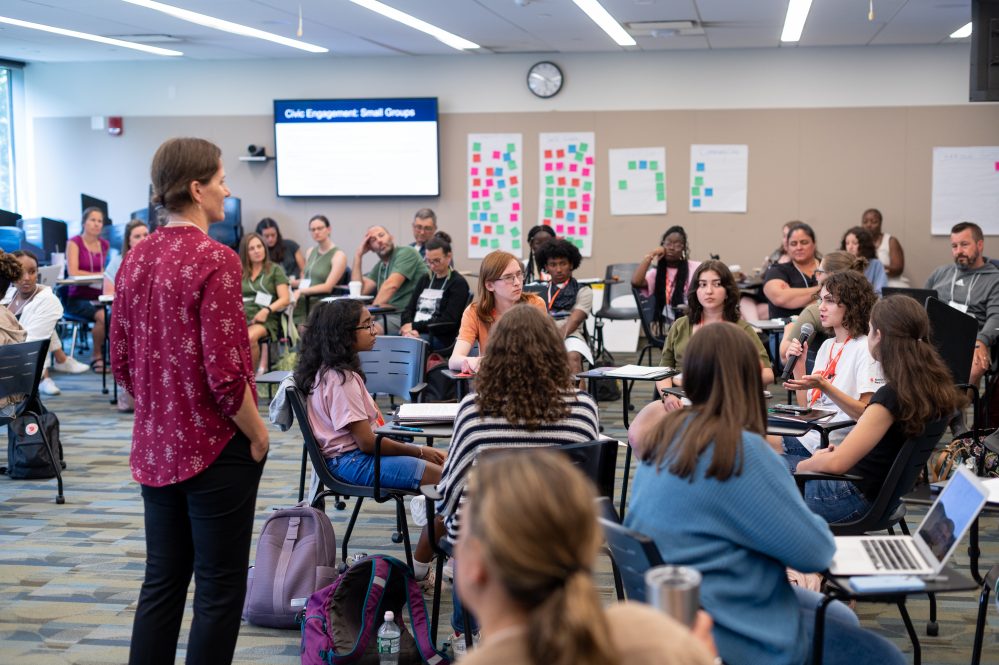Most people know Shari Redstone in her capacity as chair of the board at Paramount Global, a leading global media, streaming, and entertainment company.

But as much as she is deeply committed to her work at Paramount, Redstone has also put her heart and soul into her philanthropic work with one goal – combatting hate and intolerance. She is doing that, in part, by working to increase civics education and involvement as a means to safeguard our democracy.
A flagship example of that is the Human Rights Close to Home program, a new, innovative, and entirely unique teacher-and-student human rights and civics education program conceived and supported by Redstone, along with her family’s charitable foundation and her longtime friend, Connecticut Senator Christopher J. Dodd. The program formally launched this year at The Dodd Center for Human Rights at UConn.
Teaching Young People to Love, Before they Learn to Hate
In 2020, Redstone had the inklings that would ultimately lead to the establishment of Human Rights Close to Home.
That year, during the depths of the global pandemic, she had the idea to teach her grandchildren a foundational understanding of civics and its role in maintaining democracy.
Those lessons could not have come at a more pivotal time. That same year brought to the fore the apparent divide in our nation, the increasing threat to democratic institutions around the world, and the terrifying rise in incidents of racism, antisemitism, voter suppression, and other expressions of hate.
“We’ve lost the ability in this country to have the conversations that we need to have and to have dialogue with people who disagree with us,” Redstone says.
The key to changing that, Redstone believes, is a simple but powerful solution: education. And not just education from books – but through experiences, conversations, and equipping young people with the tools they need to make a difference.
“I think we fundamentally underestimate how much our kids can learn even about the biggest and most important issues of today,” Redstone says. “We just need to teach them in ways that are relatable and fun.”
Redstone and Dodd had been speaking for some time about ways they could collaborate to address subjects of mutual interest, such as civics and human rights education.
“I knew he cared about a lot of the same things that I did, and we had been talking for some time about how we could work together to have an impact on the issues that matter,” says Redstone.
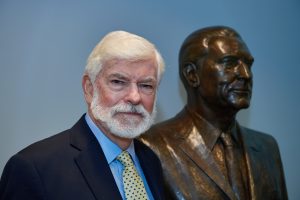
In the spring of 2020, Redstone’s father, the legendary media executive Sumner Redstone, passed away. She started thinking about how to honor his legacy, particularly his long-time passion and support for education.
Redstone raised the idea of a civics education program with Dodd, who initially thought such a program should be geared more toward older children – high school age. Redstone disagreed.
“She would argue with me,” Dodd says. “She said, ‘No, you can teach younger children what their rights are.’ And I just said, I don’t know how you do that with an elementary school student.”
Redstone’s response: Watch, I’ll show you.
“I’ll never forget it,” Dodd says with a laugh. “She brought out her grandchildren, and she said to her granddaughter, ‘If you don’t eat your peas tonight, and I send you to bed without any dessert, and in the morning I don’t give you breakfast. What is that?’ And she said, ‘That’s the Eighth Amendment – cruel and unusual punishment.’
“Her point was that if you use the right language and examples, the concepts are not impossible to understand,” Dodd says. “And it was my epiphany – she was absolutely right.”
Dodd’s own career-long legacy of human rights action and advocacy and his deep connections with the active and vibrant human rights community at UConn connected him and Redstone to a team at UConn – including professors, graduate students, high school teachers, and professional staff – who were working to design a model for human rights education in schools.
“The question then was how we could do this?” says Dodd. “There were not really examples to follow. So, we decided – let’s get smart about it, and we got some people interested at the University, who brought some ideas to the table.”
“I had an idea to create a summer program for kids and teachers focused on integrating civics education into the core curriculum in schools,” Redstone says. “I wanted it to be both effective and exciting for teachers and students alike.”
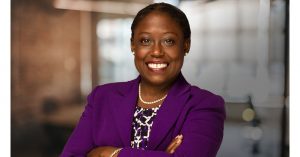
Redstone’s personal mission mirrors that of her philanthropic organization, the Redstone Family Foundation. The foundation’s president, Ayele Shakur – a former classroom teacher with more than 30 years of experience in nonprofit leadership – joined the Redstone Family Foundation in January 2023, when the collaboration with UConn was in its early design stages.
“The mission of the Redstone Family Foundation is to combat racism and antisemitism through civics and cross-cultural education while engaging the broader community,” explains Shakur. “Most of our work is with children as early as 4 years old, older youth in middle and high school, and families, since learning begins at home. And of course, working with teachers and developing meaningful curricula is critically important as well.”
Shakur joined UConn’s Advisory Council for the new civics program during the development phase and also provided guidance on the student selection process and curriculum frameworks.
“UConn’s program is one of our primary investments at the Redstone Family Foundation. Students are specifically being taught about civics, democracy, and human rights,” Shakur says. “Our goal is to ensure young people understand their role as citizens, and that they understand empathy, equity, and social justice. These are important issues that underpin a thriving democracy.”
It was from this support, insight, and effort by the Redstone Family Foundation and the UConn team that Human Rights Close to Home, an initiative of Dodd Impact Human Rights Programs in collaboration with the Neag School of Education, was born.
“We are overwhelmed with gratitude to Senator Christopher Dodd, Shari Redstone, Ayele Shakur, and the Redstone Family Foundation for their critical support and guidance in helping to make the Human Rights Close to Home program a reality,” says UConn President Radenka Maric. “This program is truly groundbreaking and unique in its approach to human rights education. Through this opportunity, we at UConn hope to inspire educators throughout Connecticut school districts to engage their students in the most important human rights issues and to empower students to be the human rights advocates of the future.”
Education through Human Rights
In 1958, Eleanor Roosevelt wrote, “Where, after all, do universal human rights begin? In small places, close to home—so close and so small that they cannot be seen on any maps of the world. Yet they are the world of the individual person; the neighborhood he lives in; the school or college he attends; the factory, farm, or office where he works. Such are the places where every man, woman, and child seeks equal justice, equal opportunity, equal dignity without discrimination. Unless these rights have meaning there, they have little meaning anywhere.”
“Her point was that if you don’t deal with human rights at home in your own local community, you’re never really going to understand it in a broader environment, internationally,” says Dodd. “It begins at home. What are your rights? What are the rights of your neighbors? What are the rights of children? And so, we thought, what a wonderful title for the program.”
Human Rights Close to Home was designed and implemented by a team at UConn comprised of human rights and education faculty, professional staff, and graduate students in partnership with Connecticut high school teachers. This expert team created an interactive curriculum that provides opportunities for teacher and student fellows to collaborate and learn from UConn’s expert human rights and education scholars and practitioners, faculty from area schools, community-based organizations, government officials, and local youth and adult activists.
The program launched as a pilot in July 2023. High school students and K-12 teachers in six Connecticut school districts – West Hartford, Hartford, East Hartford, Mansfield, Region 19, and Vernon – were invited to participate, with the goal of encouraging civic understanding and action to strengthen democracy and respect for human rights in Connecticut communities and beyond.
Teachers participating as fellows in the program agreed to a two-year commitment, with the first year involving content education and developing human rights curriculum that they could implement in their own classrooms and the second year focused on refining their curriculum and developing models that can be broadly shared and that engage the best practices from their experiences.
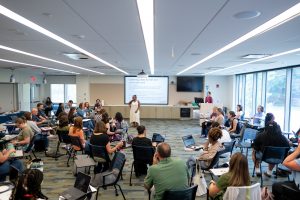
Importantly, teachers from all grade levels and subjects were encouraged to apply. In addition to those who traditionally might teach human rights topics or civics in their classrooms, the initial cohort of teachers included kindergarten teachers, math teachers, world languages teachers, and high school library science educators, among others.
“Having an explicit way to teach civics is vitally important, and what Human Rights Close to Home does really well is infuse and embed civics into other subject areas,” Shakur says. “It doesn’t have to be just a stand-alone course, which many schools don’t offer anyway. Instead, it can be the history teacher or the English teacher, reading class, social studies class, many different types of subject areas, even math and science – really allowing all types of teachers to bring civics into the classroom, and starting early.”
For teachers of young students, that might mean offering books to their students that celebrate the differences between people or initiating classroom projects that encourage community service. For older students, human rights curriculum might involve lessons about global human rights systems and more candid conversations about human rights challenges and resources in their own communities.
High school students participating as fellows in the program agreed to a one-year commitment, where they first learned about human rights – particularly about human rights issues with a local impact – and then developed an action plan to personally tackle a human rights issue in their own communities. The program offers mentors and other support for implementing their action plans over the course of the year.
The entire program kicked off with a Summer Institute held at The Dodd Center for Human Rights in Storrs in July. Twenty-five teachers and 15 students took part. The teachers commuted to campus each day, but the students were residential in the dormitories on campus, also offering them a glimpse of college-student life at UConn.
During the first week, the students and teachers delved into learning about human rights issues together – a unique, highly intentional, and unexpectedly successful aspect of the program.
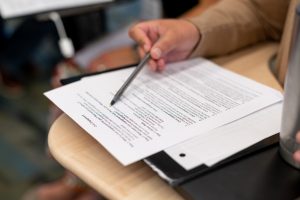
One of the guiding principles of human rights education, explains Sandra Sirota – director of Human Rights Close to Home and an assistant professor in residence at the Gladstein Family Human Rights Institute at UConn – is education through human rights.
“That means valuing the experience, perspectives, and knowledge of everyone in the room,” says Sirota. “So, it’s not just a teacher teaching to their students, but everyone’s learning from each other.”
Sirota’s own work as an educator and researcher has focused on human rights and social justice education in both formal and non-formal settings, so when it came to developing the pilot program for Human Rights Close to Home, the idea of teachers and students learning as equals from and with each other was intentionally embraced.
“It went even better than I had hoped,” Sirota says.
“In my 30 years of working with teachers and educators, and in professional development, I’ve actually never seen it – usually students and teachers are not even in the same room,” says Shakur, the Redstone Family Foundation’s president. “But to be on that equal footing as co-creators, it definitely was magical.”
For the second week, the teachers said goodbye to their student counterparts and transitioned to a mix of content learning as well as developing their classroom human rights curriculum and lesson plans.
Learners, Together
In the Summer Institute’s first week, the content started with a basic introduction to human rights, an overview of the Universal Declaration of Human Rights and the international human rights system, and a focus on what it means to conduct civic engagement from a human rights perspective, with a focus on local communities.
It also featured workshops on specific topics, like the right to education and the right to housing; guest speakers and presentations from local advocacy groups, like ACLU Smart Justice, Integrated Refugee and Immigrant Services (IRIS), GROW Windham, and the Connecticut Commission on Human Rights and Opportunities, and a field trip to The Amistad while it was at port in New London.
Both students and teachers worked to learn different skills, such as how to have Encounters dialogues, where they would think about how to talk about difficult issues in deliberate ways.
“We also worked on things like how to have difficult conversations in the classroom,” says Sirota. “Human rights topics can be difficult, and people can have different opinions. So, how do you support each other through those conversations?”
For many of the student fellows, the program taught them about issues that they didn’t know existed.
“In a video we watched, we learned that a Black person won’t be shown as many houses as a white person would when they’re interested in purchasing a home,” says Ruth Agyeman, a senior at East Hartford High School. “To me, I feel like the reason for that is purely because of skin color and the idea that Black people can’t afford certain houses, so they try to stray away from showing you bigger places because they feel like you can’t afford it. But a white person – a white person could be struggling, too, and they’ll show them all these houses. I feel like that’s so unfair, and I really didn’t know about this stuff.”
But it also helped the students feel empowered by teaching them skills that they could apply to situations in their own lives.
“I can see myself applying this in everyday life, because human rights are something that are not really debatable,” says Queen Lewis, also a senior at East Hartford High School. “In a workplace, in a school setting, you can see when someone’s being treated unfairly or when something needs to change. When I know what human rights are needed, or what human rights are, I can notice a problem, and I can immediately solve it with the tools that I’m going to learn.”
For many of the teachers, the unique experience of learning about human rights issues alongside high school students was powerful.
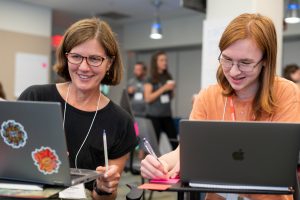
“Sometimes, we’re in that teacher-student mode, but now we’re just in people mode,” says Darcie Hudson, a high-school math teacher in West Hartford. “So, to work with high school students on something that’s common – I’m not an expert, they’re not the expert. We’re learners, together. Everybody in the room is, and I feel like even with the presenters, nobody’s coming from this top-down. We’re talking about human rights, and that involves all of us, on an equal basis.”
“As a teacher, one of the things they teach you in college is, ‘Be a lifelong learner,’ and you don’t necessarily know what they mean until you put it in practice and you understand the importance of modeling that for your students as well – showing the students that you are also learning as you go, you’re also making mistakes,” says Sarah Zitney, a first-grade teacher in Hartford. “It’s really an invaluable experience, having teachers and students be together, which is just something that never happens.”
The teachers were excited to bring back what they learned not only to their own classrooms through their lesson plans, but also to their schools and their districts.
“My hope would be that we can grow it so that kids are getting it all the way through their K-to-8 experience, that they’re getting some exposure to and work with human rights education all the way through,” says Christopher Toomey, a kindergarten teacher in Mansfield. “I hope that we can grow this into a curriculum that will step its way up in complexity and involvement as kids go through their years in school.”
Shakur was able to join the Summer Institute for two days to observe the student and teacher fellows and how they interacted with the program.
“I have to say, the level of enthusiasm and excitement from both the adults and the young people was really amazing to watch,” says Shakur. “The quality of the curriculum and the interactions of the fellows were just really phenomenal.”
Democracy Doesn’t Sustain Itself
For Redstone, a driving force behind her philanthropy and advocacy is to leave the world a better place for generations to come.
“We are living in challenging times, and our nation is at a tipping point. I believe the most powerful tool we have to inspire the change that has to happen is education, starting with our own children,” says Redstone.
It’s a sentiment Shakur echoes.
“All of the change we want to see in society is going to come through our young people,” she says. “So, we have to make sure they’re equipped. They need the skills, the understanding, the know-how, and the connections to actually advance the change we need.”
That change is already happening through Human Rights Close to Home, Sirota says. She has heard from teacher fellows who are already implementing the content and techniques they developed through the program in their classrooms this school year.
“I was very pleasantly surprised to see that they’re taking this idea of education through human rights and already embracing it and bringing it to their classes,” Sirota says. “They’re talking about how their students really appreciate it. That’s been exciting to see, how it’s already affecting other students, how teachers are bringing it to their departments, and other teachers are embracing these ideas and bringing them into their classrooms, too.”
The student fellows meet every other week with their mentors, who are all undergraduate students studying human rights at UConn, as they work on their locally focused projects throughout this school year.
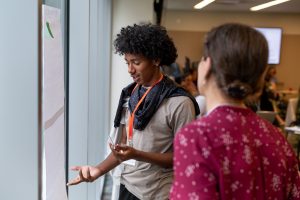
While the Human Rights Close to Home program itself is still in its pilot stage, plans are already in the works for next year’s Summer Institute. The hope is to welcome a new – and likely larger – cohort of high school students to work alongside the teachers in the program.
That’s one of the beauties of the program, says Jim Waller, the Christopher J. Dodd Chair in Human Rights Practice, Director of Dodd Human Rights Impact Program at UConn, and professor in the College of Liberal Arts and Sciences’ Department of Literatures, Cultures, and Languages – Human Rights Close to Home is not a one-off course.
“We don’t have students coming here for just one week, and teachers for just two weeks, and then it’s done,” he says. “This is the beginning of a relationship with these teachers, with these students, and this is just the first step in that journey.”
Dodd also hopes that the program can ultimately serve as a model for other states interested in ways to integrate civics and human rights into learning at all stages.
“I think there is a growing appreciation in our own country and our own state that we’re not doing as good a job as we should be doing with our children about teaching them what it means to live in a democracy,” Dodd says. “We’d like to demonstrate that not only can we do this and learn from it – what do you need to know, how do you teach this well, what are the tools that will be most successful? I’m hopeful that, maybe long after I’m not around, that this concept, this idea, this seed that Shari Redstone helped us plant is not only making a difference in the lives of children in our own state, but the idea has caught on elsewhere as well.”
While 54% of the world’s population currently lives in countries governed by an authoritarian regime, human rights, Waller explains, aren’t just a faraway issue – something that happens in another country, on the other side of the world.
They’re important to everyone, and something we all have to protect.
“It’s the way we sustain democracy,” he says. “Democracy doesn’t sustain itself. That’s active work. And human rights – teaching it, promoting it, protecting human rights – that’s a part of that important work.”
For more information about human rights education and advocacy opportunities at UConn, visit humanrights.uconn.edu.
